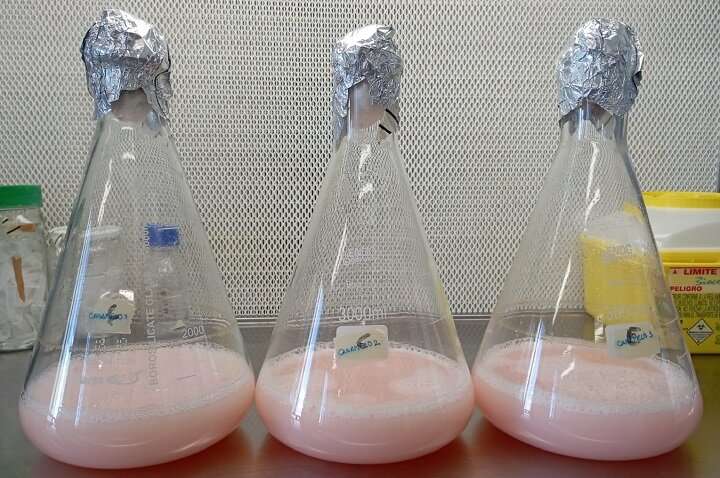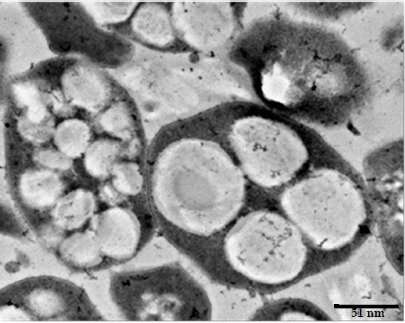Researchers identify a pigment present in the Santa Pola salt flats as an anticarcinogenic agent

The University of Alicante Applied Biochemistry research group—in collaboration with researchers from the Alicante University Hospital Dr. Balmis (HGUDB) and the Alicante Health and Biomedical Research Institute (ISABIAL)—has identified the anti-cancer capacity of a pigment present in the Santa Pola salt flats. This pigment is produced by certain microorganisms, the “halophilic archaea,” in order to protect themselves from the sun, and its anti-tumor capacity has been tested in several types of breast cancer.
Professor in Biology and director of the group Rosa María Martínez explains that this important finding, which has been published in the journal Scientific Reports, began with the development of Micaela Giani’s Ph.D. thesis. There, she demonstrated—through in vitro tests—the antioxidant activity of the pigment and its effect on enzymes (biocatalysts) that are involved in pathologies such as diabetes or metabolic syndrome such as diabetes and metabolic syndrome.
After these results were made public, it was then that they wondered what would happen if they added the pigment to the cancer cells, based on the hypothesis that, being a pigment with an antioxidant activity almost 300 times higher than that of other antioxidants, it could limit the ability of these cells to grow and reproduce, as explained by the researcher.
In this second phase, the research group has worked in collaboration with Dr. Gloria Peiró, pathologist at the HGUDB and lecturer in the UA Department of Biotechnology, and Yoel Genaro Montoyo-Pujol, Ph.D. in Experimental and Biosanitary Sciences and researcher also at the UA, both belonging to the breast cancer and immunology research group at ISABIAL.

Thanks to this collaboration, the effect of this pigment could be tested in vitro in cell lines representing different intrinsic phenotypes of breast cancer and a line of healthy breast tissue. According to Martínez, they have reached the conclusion that, in certain doses, the pigment does not cause any harmful effect on healthy cells, but it does limit the growth capacity of neoplastic cells. She also stressed that this finding opens a door to biomedicine, to the design of new strategies to fight cancer based on the use of natural compounds, which are not harmful to the body.
Halophilic archaea are extremophilic microorganisms that require a hypersaline environment to thrive, so they are mainly found in coastal salt marshes, inland salt marshes or hypersaline lakes. These microorganisms synthesize rare C50 carotenoid pigments called bacteriorruberin (BR) and its derivatives monoanhydrobacterioruberin (MABR) and bisanhydrobacterioruberin (BABR).
Based on this discovery, as the researcher pointed out, there are several phases to be developed, starting with extending the study with different cell lines of other types of tumors, to continue with tests on tissue samples from biopsies or surgical specimens, in order to design possible treatment protocols using this pigment, and then move on to animal studies before reaching clinical use in patients.
More information:
Micaela Giani et al, Haloarchaeal carotenoids exert an in vitro antiproliferative effect on human breast cancer cell lines, Scientific Reports (2023). DOI: 10.1038/s41598-023-34419-x
Citation:
Researchers identify a pigment present in the Santa Pola salt flats as an anticarcinogenic agent (2023, May 18)
retrieved 18 May 2023
from https://phys.org/news/2023-05-pigment-santa-pola-salt-flats.html
This document is subject to copyright. Apart from any fair dealing for the purpose of private study or research, no
part may be reproduced without the written permission. The content is provided for information purposes only.
For all the latest Science News Click Here
For the latest news and updates, follow us on Google News.

